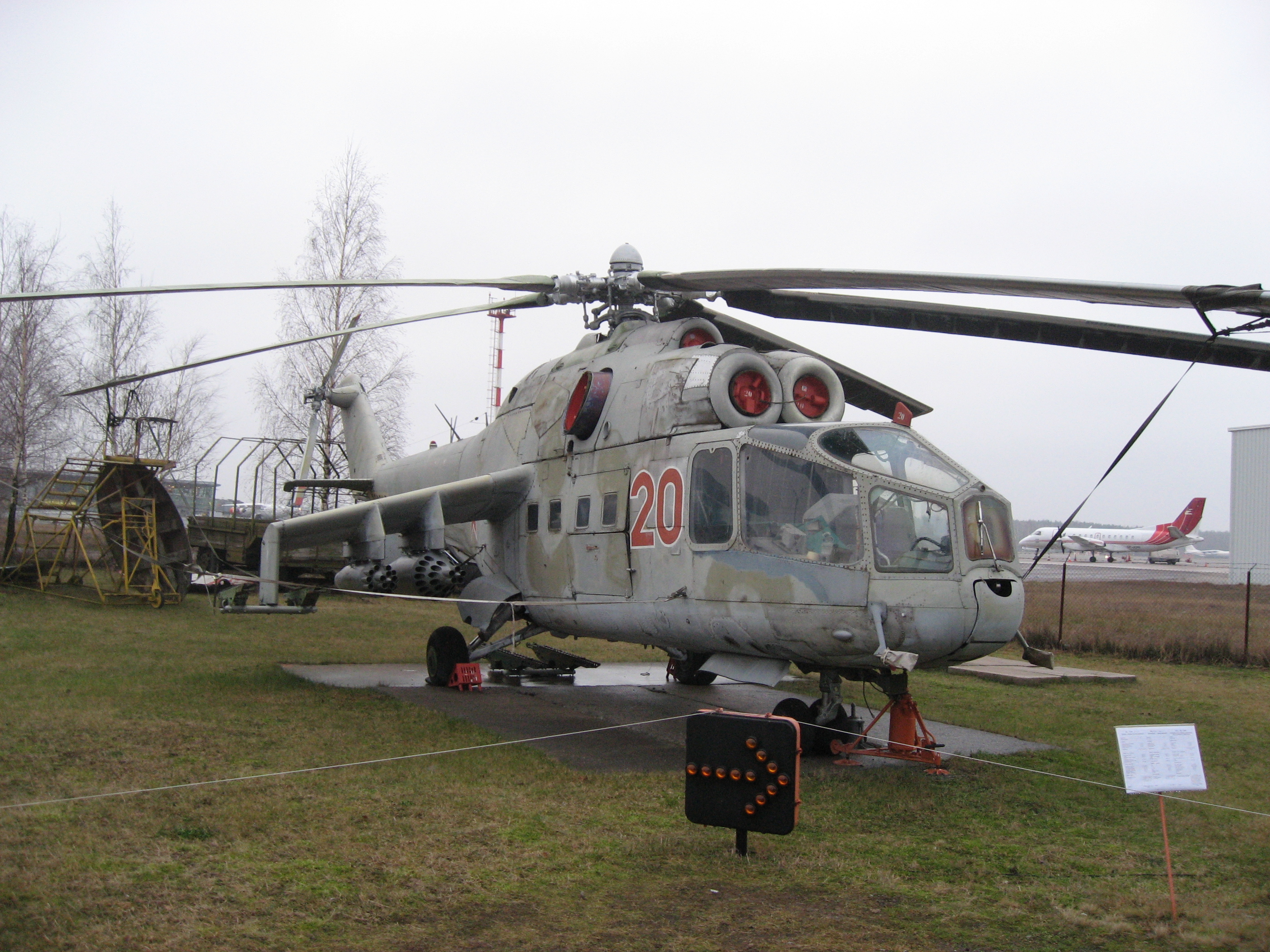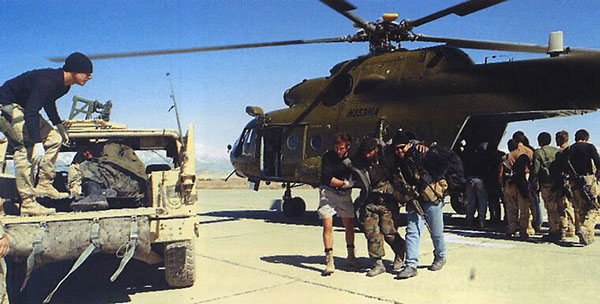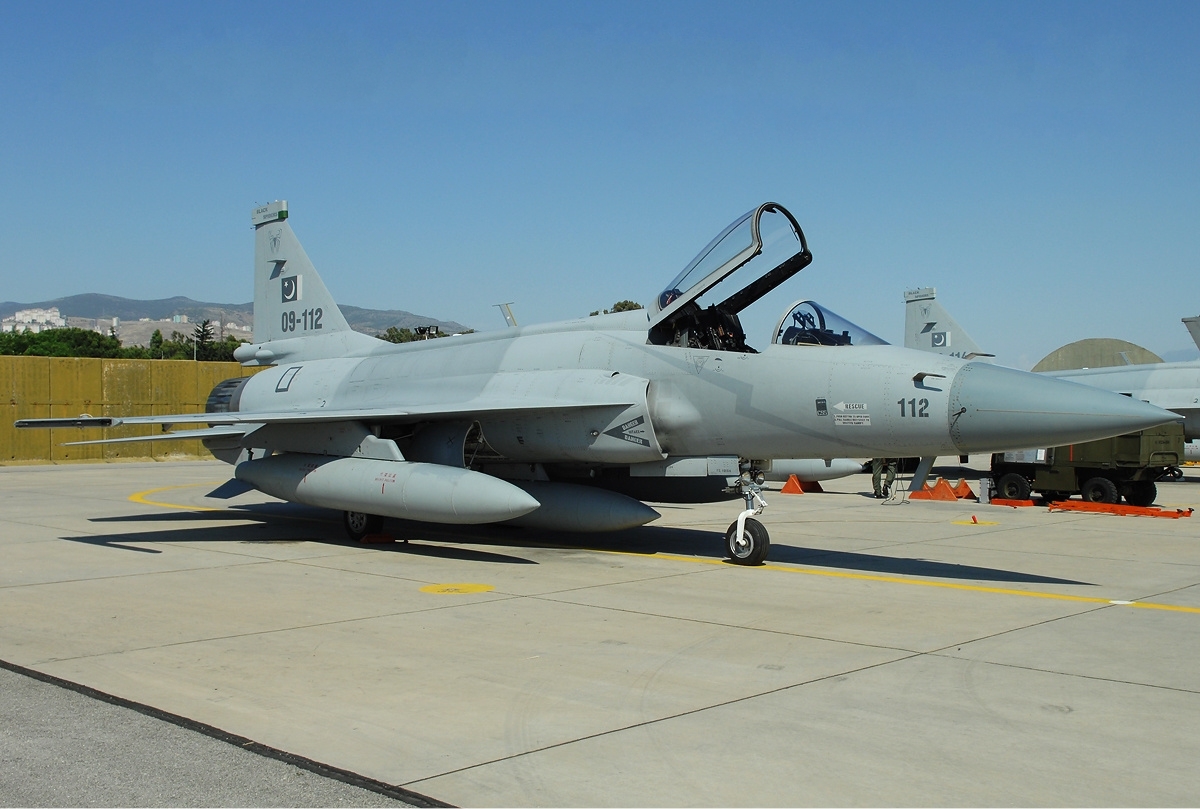|
Azerbaijan Air Force
The Azerbaijani Air Forces and Air Defense Troops (stylized as ), composed of the Azerbaijani Air Forces () and the Azerbaijani Air Defense Troops (), are the air and air defense service branch of the Azerbaijani Armed Forces. History The Azerbaijani Air Forces trace their origin to 1919 during the short-lived Azerbaijan Democratic Republic, which had originally bought its first military aircraft on 26 June 1918. Following Azerbaijan's independence from the Soviet Union in 1991, the former Soviet air bases in the country helped to develop the Air Forces and Air Defense Troops. On February 11, 2009, the Commander of the Air Force, Lieutenant General Rail Rzayev, was assassinated outside his home by an unidentified armed assailant. Rzayev had been reportedly negotiating closer ties with the United States regarding air force modernisation before his death, possibly including the acquisition of US fighter aircraft. He was succeeded by Major-General Altay Mehdiyev who was appoint ... [...More Info...] [...Related Items...] OR: [Wikipedia] [Google] [Baidu] |
Azerbaijan Democratic Republic
The Azerbaijan Democratic Republic (), also known as the Azerbaijan People's Republic (; ), was the first secular democracy, democratic republic in the Turkic peoples, Turkic and Muslim worlds. *Tadeusz Swietochowski. ''Russia and Azerbaijan: A Borderland in Transition''. Columbia University Press, 1995. , . * Reinhard Schulze. ''A Modern History of the Islamic World''. I.B.Tauris, 2000. , . Citations are at Talk:Azerbaijan Democratic Republic#First or second The ADR was founded by the Azerbaijani National Council in Tbilisi, Tiflis on 28 May 1918 after the collapse of the Transcaucasian Democratic Federative Republic, and ceased to exist on April 28, 1920. Its established borders were with Russian Soviet Federative Socialist Republic, Russia to the north, the Democratic Republic of Georgia to the north-west, the First Republic of Armenia, Republic of Armenia to the west, and Qajar Iran, Iran to the south. It had a population of around 3 million. Ganja, Azerbaijan, Ganja was the ... [...More Info...] [...Related Items...] OR: [Wikipedia] [Google] [Baidu] |
Bayraktar TB2
Bayraktar TB2 (Turkish language, Turkish: ''Standard-bearer TB2'') is a Medium-altitude long-endurance UAV, medium-altitude long-endurance (MALE) unmanned combat aerial vehicle (UCAV) capable of remotely controlled or autonomous flight operations. It is manufactured by the Turkish company Baykar, Baykar Makina Sanayi ve Ticaret A.Ş., primarily for the Turkish Armed Forces. The aircraft are monitored and controlled by an aircrew in a ground control station, including weapons employment. The development of the UAV has been largely credited to Selçuk Bayraktar, a former Massachusetts Institute of Technology, MIT graduate student. By November 2021, the TB2 drone had completed 400,000 flight hours globally. The largest operator of TB2 drones is the Turkish military, but an export model has been sold to the militaries of a number of other countries. Turkey has used the drone extensively in strikes on Kurdistan Workers' Party (PKK) and People's Protection Units (YPG) targets in Iraq ... [...More Info...] [...Related Items...] OR: [Wikipedia] [Google] [Baidu] |
Aeronautics Defense Systems
Aeronautics Defense Systems, doing business as Aeronautics, is an Israeli defense contractor headquartered in Yavne, Israel. The company primarily manufactures unmanned aerial vehicles for both military and civilian applications. Aeronautics’ senior management is made up of figures from Israel's defense, financial and political sectors. The company's CEO is Amos Mathan, who was the CEO of Soltam Systems. The chairman of the board is Yedidia Yaari, a retired vice admiral who was the commander-in-chief of the Israeli Navy from 2000 to 2004 and the president of defense firm Rafael Advanced Defense Systems Ltd. from 2004 to 2015. On September 2, 2019, the company was acquired by Rafael Advanced Defense Systems, and Israeli businessman Avihai Stolero. History The company was founded by Zvika Nave, Moshe Caspi and Avi Leumi in 1997 as a start-up called NETS Integrated Avionics Systems. Since its inception, Aeronautics focused on developing low cost, miniature Unmanned Aerial Systems ... [...More Info...] [...Related Items...] OR: [Wikipedia] [Google] [Baidu] |
Orbiter UAV
The Orbiter Mini UAV System is an Israeli compact and lightweight unmanned aerial vehicle designed for use in military and security applications. It has been used in the Middle East since it was first developed. The system is used for 'Over The Hill' reconnaissance missions, Low Intensity Conflicts and Urban warfare operations as well as any close range ISTAR mission. It is manufactured by the Israeli company Aeronautics Defense Systems. Aeronautics announced in May 2015 the Orbiter 1K "Kingfisher" version with a fuselage adapted to carry a explosive payload, turning it into a loitering munition. It can be controlled by an operator, or is capable of being given a waypoint and independently scanning the area to detect and destroy a stationary or moving target. If a target is not detected, the Orbiter 1K can return to base and land for reuse. The Orbiter 1K can fly for 2–3 hours carrying an electro-optical/infrared sensor with a unique warhead that, due to its low acoustic sign ... [...More Info...] [...Related Items...] OR: [Wikipedia] [Google] [Baidu] |
PZL Mi-2
The Mil Mi-2 (NATO reporting name: Hoplite) is a small, three rotor blade Soviet-designed multi-purpose helicopter developed by the Mil Moscow Helicopter Plant, designed in the early 1960s and produced exclusively by WSK "PZL-Świdnik" in Poland. Nearly 5,500 were made by the time production stopped in 1999, and it remains in service globally. Design and development The Mi-2 was produced exclusively in Poland, in the WSK PZL-Świdnik factory in Świdnik. The first production helicopter in the Soviet Union was the Mil Mi-1, modelled along the lines of the S-51 and Bristol Sycamore and flown by Mikhail Mil's bureau in September 1948. During the 1950s it became evident, and confirmed by American and French development, that helicopters could be greatly improved with turbine engines. S. P. Isotov developed the GTD-350 engine and Mil used two of these in the far superior Mi-2. The twin shaft-turbine engines used in the Mi-2 develop 40% more power than the Mi-1's piston engines, ... [...More Info...] [...Related Items...] OR: [Wikipedia] [Google] [Baidu] |
Mil Mi-35M
The Soviet and later Russian Mil Mi-24 helicopter has been produced in many variants, as described below. History In 1966, Soviet aircraft designer Mikhail Mil created a mock-up design of a new helicopter (derived from the Mil Mi-8) which was made with the intent of fulfilling both the role of a close air support aircraft as well as being able to transport infantry into combat. This prototype design was designated the V-24, and in 1968 a directive was given to proceed with the development of the helicopter. The Mi-24 went from the drawing board to the first test-flights in less than eighteen months, with the first models being delivered to the Soviet Armed Forces for evaluation in 1971. As a result of the speedy development, the initial Mi-24 variants had a number of problems: lateral roll, weapon sighting issues, and a limited field of view for the pilot. A later redesign of the Mi-24's front section solved most of these problems. List of variants ;A-10: Designation given to ... [...More Info...] [...Related Items...] OR: [Wikipedia] [Google] [Baidu] |
Mil Mi-24
The Mil Mi-24 (; NATO reporting name: Hind) is a large helicopter gunship, attack helicopter and low-capacity transport helicopter, troop transport with room for eight passengers. It is produced by Mil Moscow Helicopter Plant and was introduced by the Soviet Air Forces, Soviet Air Force in 1972. The helicopter is currently in use by 58 countries. In NATO circles, the export versions, Mi-25 and Mi-35, are denoted with a letter suffix as "Hind D" and "Hind E". Soviet pilots called the Mi-24 the "flying tank" (), a term used historically with the famous World War II Soviet Ilyushin Il-2#"The Flying tank", Il-2 ''Shturmovik'' armored ground attack aircraft. Other common unofficial nicknames were "Galina" (or "Galya"), "Crocodile" (), due to the helicopter's camouflage scheme, and "faceted glass, Drinking Glass" (), because of the flat glass plates that surround earlier Mi-24 variants' cockpits. Development During the early 1960s, it became apparent to Soviet designer Mikhail Mil th ... [...More Info...] [...Related Items...] OR: [Wikipedia] [Google] [Baidu] |
Bell 412
The Bell 412 is a utility helicopter of the Huey family manufactured by Bell Helicopter. It is a development of the Bell 212, with the major difference being the composite four-blade main rotor. It is a twin-turbine helicopter that has been popular on the civilian and military markets, and major users include Canada, Italy, and Japan. Several hundred have been produced since its introduction in 1979, and several iterations of upgrades and variations have been produced, such as with upgraded cockpit electronics. It has been manufactured under license in Italy as the Agusta-Bell AB412, in Indonesia by Indonesian Aerospace, and in Japan by Subaru. The Canadian Bell 412 was produced in Canada, but it was already the location of the main Bell Textron factory. Design and development Development began in the late 1970s, with two Bell 212s being converted into 412 prototypes. An advanced four-blade main rotor with a smaller diameter replaced the 212's two-blade rotor. A Bell 412 ... [...More Info...] [...Related Items...] OR: [Wikipedia] [Google] [Baidu] |
Ka-32
The Kamov Ka-27 (NATO reporting name 'Helix') is a military helicopter developed for the Soviet Navy, and as of 2024 is in service in various countries including Russia, Ukraine, Vietnam, China, South Korea, and India. Variants include the Ka-29 assault transport, the Ka-28 downgraded export version, and the Ka-32 for civilian use. Design and development The helicopter was developed for ferrying and anti-submarine warfare. Design work began in 1969 and the first prototype flew in 1973. It was intended to replace the decade-old Kamov Ka-25, and had to have identical or smaller external dimensions than its predecessor. Like other Kamov military helicopters it has coaxial rotors, removing the need for a tail rotor. In total, five prototypes and pre-series helicopters were built. Series production started at Kumertau in July 1979, and the new helicopter officially entered service with the Soviet Navy in April 1981. The Ka-27 has a crew of three with a pilot and navigator both stati ... [...More Info...] [...Related Items...] OR: [Wikipedia] [Google] [Baidu] |
Mil Mi-17
The Mil Mi-17 (NATO reporting name: Hip) is a Soviet-designed Russian military helicopter family introduced in 1975 (Mi-8M), continuing in production at two factories in Russia, in Kazan and Ulan-Ude. It is known as the Mi-8M series in Russian service. The helicopter is mostly used as a medium twin-turbine transport helicopter, as well as an armed gunship version. Development Developed from the basic Mi-8 airframe, the Mi-17 was fitted with the larger Klimov TV3-117MT engines, rotors, and transmission developed for the Mi-14, along with fuselage improvements for heavier loads. Optional engines for " hot and high" conditions are the Isotov TV3-117VM. Recent exports to China and Venezuela for use in high mountains have the new Klimov VK-2500 version of the Klimov TV3-117 engine with FADEC control. The designation Mi-17 is for export; the Russian armed forces call it the Mi-8MT. The Mi-17 is recognisable by the tail rotor on the port side instead of the starboard side, a ... [...More Info...] [...Related Items...] OR: [Wikipedia] [Google] [Baidu] |
JF-17
The CAC/PAC JF-17 Thunder (), or FC-1 ''Xiaolong'' (), is a fourth-generation, lightweight, single-engine, multirole combat aircraft developed jointly by the Pakistan Aeronautical Complex (PAC) and Chengdu Aircraft Corporation (CAC) of China. It was designed and developed as a replacement for the third-generation A-5C, F-7P/PG, Mirage III, and Mirage 5 combat aircraft in the Pakistan Air Force (PAF). The JF-17 can be used for multiple roles, including interception, ground attack, anti-ship, and aerial reconnaissance. The Pakistani designation "JF-17" stands for "Joint Fighter-17", with the "Joint Fighter" denoting the joint Pakistani-Chinese development of the aircraft and the "-17" denoting that, in the PAF's vision, it is the successor to the F-16. The Chinese designation "FC-1" stands for "Fighter China-1". The JF-17 can deploy diverse ordnance, including air-to-air, air-to-surface, and anti-ship missiles, guided and unguided bombs, and a 23 mm GSh-23-2 twin- ... [...More Info...] [...Related Items...] OR: [Wikipedia] [Google] [Baidu] |
MiG-29
The Mikoyan MiG-29 (; NATO reporting name: Fulcrum) is a twinjet, twin-engine fighter aircraft designed in the Soviet Union. Developed by the Mikoyan design bureau as an air superiority fighter during the 1970s, the MiG-29, along with the larger Sukhoi Su-27, was developed to counter U.S. fighters such as the McDonnell Douglas F-15 Eagle and the General Dynamics F-16 Fighting Falcon. The MiG-29 entered service with the Soviet Air Forces in 1983. While originally oriented towards combat against any enemy aircraft, many MiG-29s have been furnished as multirole combat aircraft, multirole fighters capable of performing a number of different operations, and are commonly outfitted to use a range of air-to-surface armaments and precision munitions. The MiG-29 has been manufactured in several major variants, including the multirole Mikoyan MiG-29M and the navalised Mikoyan MiG-29K; the most advanced member of the family to date is the Mikoyan MiG-35. Later models frequently feature impr ... [...More Info...] [...Related Items...] OR: [Wikipedia] [Google] [Baidu] |








